- Brown Millipede
- Millipede Defense Posture
- Yellow Spotted
- Red Millipede
- “Minni” Millipede1
- “Minni” Millipede2
Photos of various NW millipedes. Note: The “mini-millpedes” in the lower right were less than 1/2 inch long and as yet not identified.
MARVELOUS MILLIPEDES
John M. Regan
Around 10,000 species of them crawl around the world, these strange creatures with the impossible number of weird little legs. Moving slowly and surely in their fascinating way millipedes are the archetypal creepy crawly bug. They are a big hit in the pet trade, though, as well as nature and science fiction movies. Mild mannered, harmless, and relatively slow they are an ideal subject for natural observation and there is a lot to learn about these extraordinarily interesting invertebrates.
To begin with, what make a millipede a millipede? Millipedes belong to a class of animals called Diplopoda, one of a group of arthropods called Myriopods which includes the centipedes as well. The Diplopoda “Thousand Leggers” are distinguished from centipedes in a number of way, the most noticeable – not surprisingly – is their number of legs. Centipedes have just two legs per body segment, one on each side. Millipedes boast twice that density of limbs with four per body segment, two on each side. Millipedes also have a greater number of body segments than centipedes. Diplopoda body segments are called diplosegments. These little armored plates cover the animal so thoroughly that the millipede legs jut out from underneath it rather than to the side as in centipedes. Watching a millipede crawl along the ground is like watching a wave of motion rather than individual leg movement. Millipedes are vegetarians, too. They have no centipede like fangs to bite with – a definite point in their favor in regard to pets.
Predators that they are, centipedes are built for speed. Although there are some predatory species, the vast majority of diplopods are herbivores. They don’t need speed, they need power. And that’s what all those legs are for. Those huge numbers of limbs provide the pushing power of mini bulldozer propelling the animal through the leaf litter or whatever they happen to be living under. Observe them closely and you see a wave of motion beginning at the rear of the creature and moving forward in perfect coordination, the legs on each side perfectly synchronized for maximum traction.
So how does this harmless little crawler defend itself? Their first and primary defense is armor. The shiny plates that cover the animal from front to back and along each side of its body are made of a tough, calcareous material. Millipedes may enhance this protection by rolling into a ball. Many, however, have an additional defense – chemical weaponry. Specialized glands on the back of the animal secrete or even spray a foul smelling substance. The authoritative Rupert and Barnes “Invertebrate Zoology” (see references) lists aldehydes, quinones, phenols, and hydrogen cyanide as having been identified in these secretions. None of this is really harmful to humans.
Tropical climates claim the highest numbers but North America and Europe have huge numbers as well. Our most noticeable Pacific Northwest millipede is the yellow spotted millipede, Harpaphe haydeniana. About 2 – 3 inches long our yellow spotted millipede is known for emitting hydrogen cyanide if threatened; thus the reason for the reported odor of almonds from these millipedes.
How big to they get? The big and small answer when it comes to invertebrates is often a point of contention. Among the diplopoda the longest is pretty well agreed upon. As for the smallest, who knows? Maybe it has not even been discovered yet. Below is a list of what most sources consider the biggest and smallest millipedes in the world:
Your ads will be inserted here by
Easy Plugin for AdSense.
Please go to the plugin admin page to
Paste your ad code OR
Suppress this ad slot.
Longest: African Black Millipede: 12 – 15 inches
Smallest: species of Polyxenus, just 2 mm long, less than 1/4 of an inch
North America: the American Giant Millipede: about 4 inches long
But the real giant of all times is an extinct species that is said to have reached nearly six feet in length. Makes you wonder how many legs that thing had!
References:
Invertebrate Zoology, Rupert and Barnes, 6th Edition
Earth Life Web:
http://www.earthlife.net/insects/diplopoda.html
Nature Conservancy

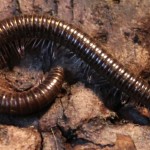
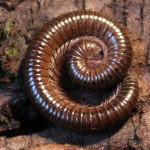
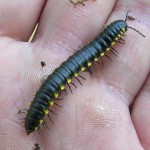
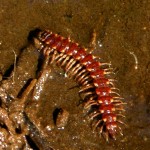
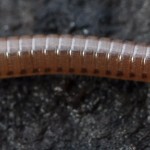

Leave a Reply
You must be logged in to post a comment.